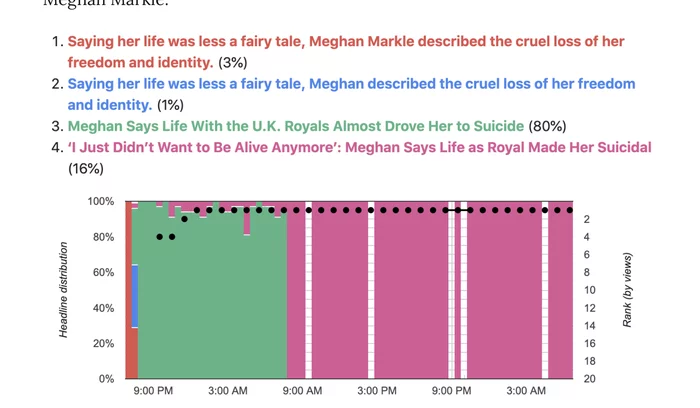The author of this retelling is the curator of the new HSE Master's program in Product Management and Data-Driven Marketing .

- All site visitors at the time of visiting the site are divided into groups (sometimes up to 7) and given different headings of articles with the same content. Then they look at what they react to best and then roll out the most effective headline to the entire audience.
- It turned out that articles get into the "most read" after such A / B testing with a probability of 80% more than without headline testing.
- Somewhere this is the selection of the correct word, but more often - a comparison of headings that are different in emotional charge.
- 62% NYT . «» , .
- 6 .
- NYT , . — « , » « ».

Then he made another drawing, where he studied what is displayed on the main screen. The main conclusion in it: - 90% of articles live on the main page for 9 hours, 10% kill in less than an hour
- 40% of articles are news, but the remaining 60% are entertaining garbage - opinions and recipes "how to cook scramble" and " what to wear in cool weather ”, which live on the main record time. His conclusion is that a business publication cannot hold attention only to business news.
My resume is that there is nothing good in such a hack of human curiosity. When the generation of clickbait headlines and the speed of their checking reaches the maximum, the content of the article will become completely secondary.